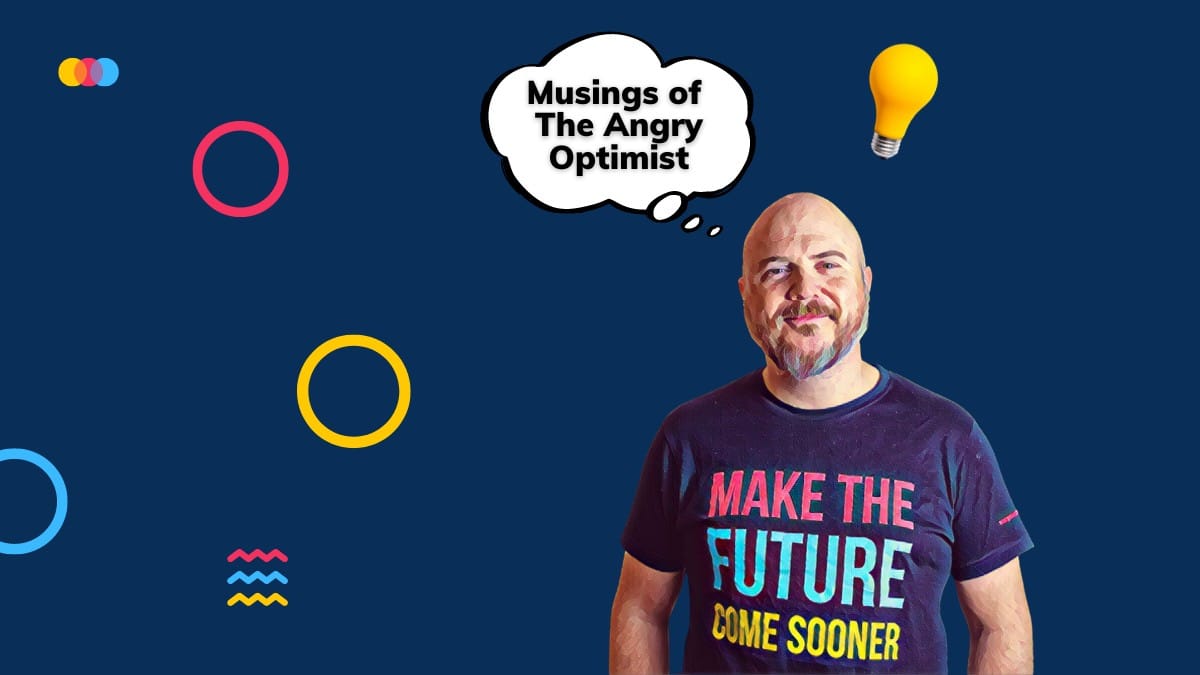
🖥️ Should Sweden invest in models or increase the use of AI? – report from the second meeting of the AI Commission
The AI Commission's second meeting was held in Gothenburg. There, as you know, people take the tram. Besides that, we discussed whether Sweden should invest in AI models or increase the use of AI, or perhaps both?
Share this story!
I am a member of the Swedish government's AI Commission and my ambition with these reports is to keep you updated on the commission's work, and I welcome your ideas and input. Even though this concerns Sweden, I believe it could be relevant for those in other countries as well, as you consider AI in your contexts.
I won’t reveal exactly what is said in the meetings, as the members need to be able to speak freely and think aloud without "ending up in the newspaper". However, the work itself is not secret; on the contrary, an important part of it is to contribute to the discussion about AI. I am also quite open about what has been presented to the AI Commission.
In Gothenburg, one takes the tram (including Carl-Henric Svanberg?)
Today's hosts were two Martins. Svensson, CEO of AI Sweden, and Lundstedt, CEO of Volvo Group. We were at Volvo's CampX, their startup accelerator.
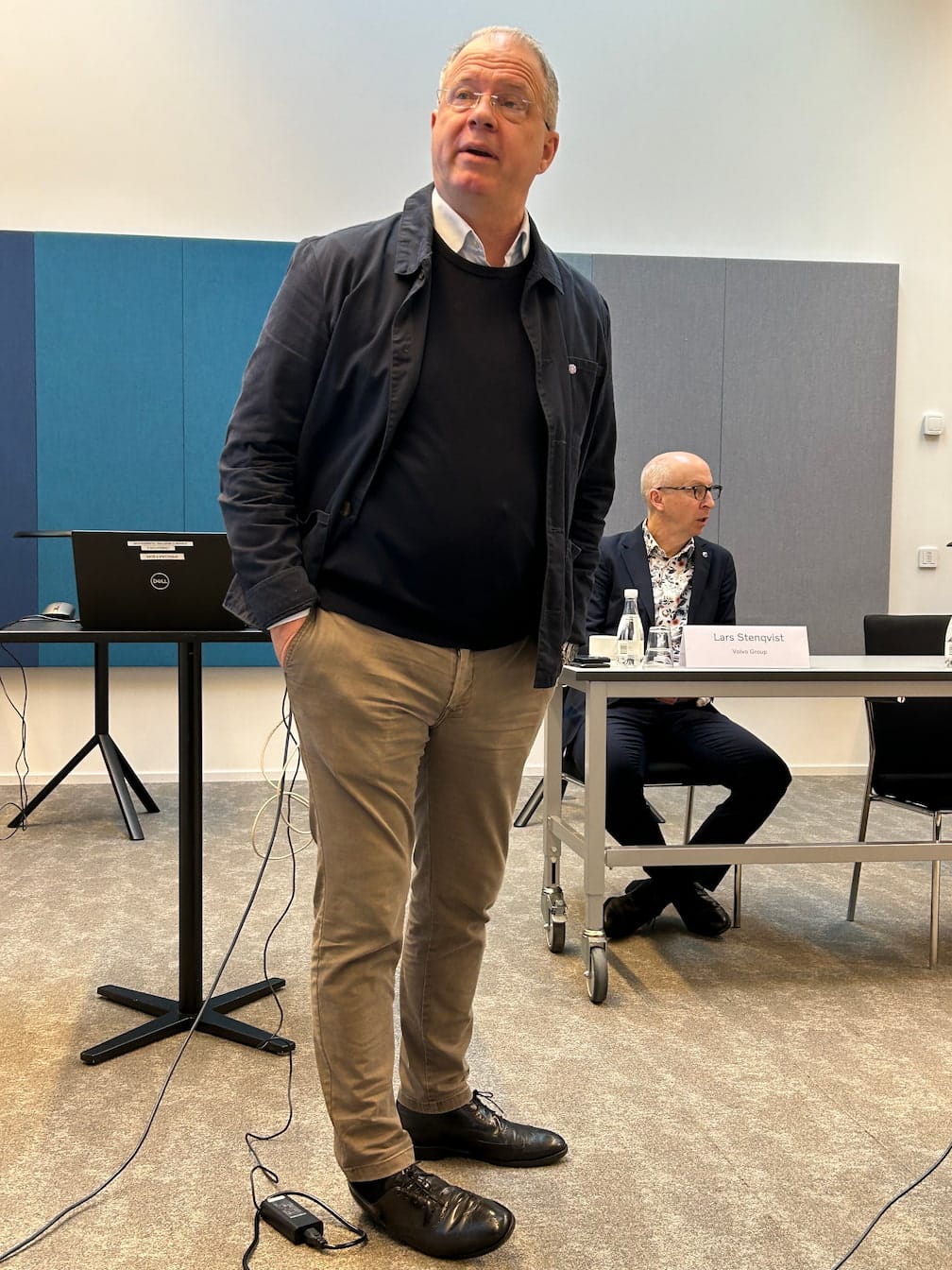
When I mentioned at a talk the day before that I would take the train to Gothenburg for a meeting with the AI Commission, I got the comment: "But Carl-Henric Svanberg hardly takes the train, right?"
It might not be an unreasonable thought about someone who has been the CEO of Ericsson, chairman of BP, and until recently chairman of Sweden’s largest company, Volvo Group.
"Don't be so sure about that," I said. "He just sent an email about which tram we should take to the meeting."
And we did.
In the morning, we listened to presentations from Volvo, AstraZeneca, Vinnova, AI Sweden, the Region of Skåne, and the Västra Götaland Region, as well as the Canadian CIFAR.
Models or usage, what should we invest in?
CIFAR, via link, talked about the new Canadian AI initiative. Approximately $2 billion has been allocated in their federal budget to AI, with about 85 percent going to infrastructure and computing power. Canada ranks high in AI rankings and was the first to come out with an AI strategy, in 2017.
Darja Isaksson, director-general at Vinnova, argued that Sweden should not give up when it comes to AI models (such as the large language models behind ChatGPT and Gemini.) She believes that it is indeed possible to build successful models now, pointing to the French startup Mistral that launched just last year.
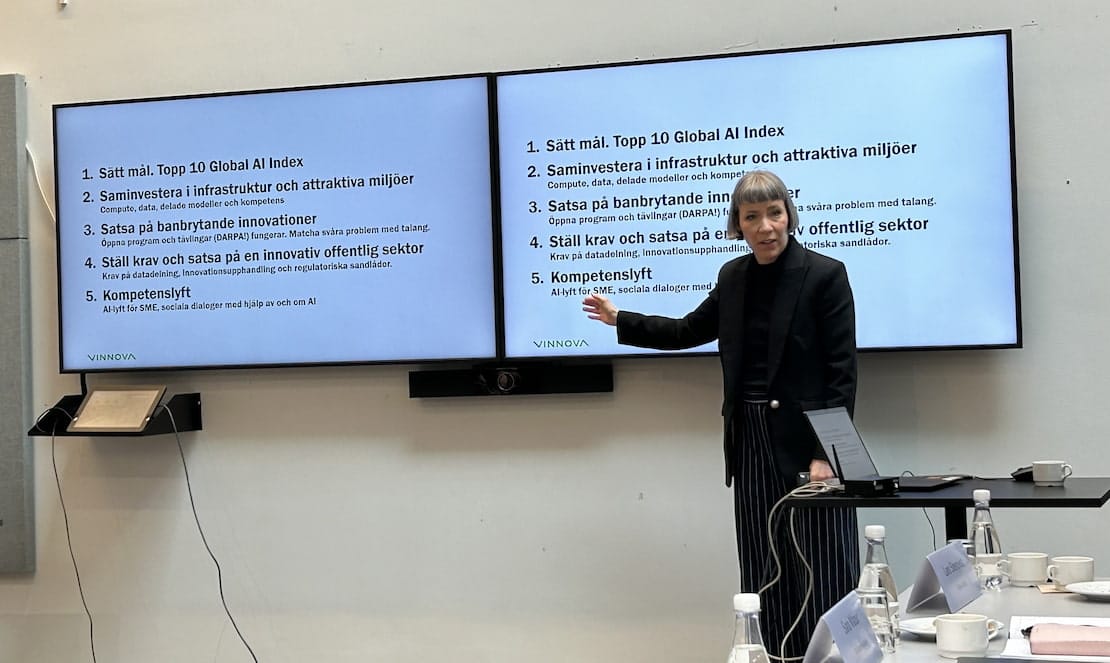
She might be right. We don’t know how the models will evolve, and there are indications that they will not only become more expensive and larger, but also smaller and more niche.
But, just because it's possible, why should we invest in our own Swedish AI models? Shouldn't we instead focus on increasing the use of AI? I asked her during a coffee break. She said there is no contradiction and that models can contribute to increased usage. It was not a clear proposal from her and Vinnova to do so, but she wanted to challenge our thinking (which of course is excellent.)
However, in a strategy we must choose a direction. If we invest in both models and increased use, it may end up being too little of both. We should certainly not do things that complicate either, but we should consider where the biggest competitive advantage lies.
I still believe that increasing the use is Sweden's greatest opportunity. Other countries are leading in models, and many are investing in that. Canada, for example, requires more than just money to catch up. France had the right people, too. Canada has a very strong cluster around three world-leading researchers, such as Geoffrey Hinton.
But in the use of generative AI, no one has a clear lead yet. It’s so new that no one has had time to sprint ahead of the others. It’s also in the use of generative AI that the largest overall value will be created. The boost for productivity can be significant for the country that uses generative AI the most and best in both the public sector and private industry. We’re talking about hundreds of billions of SEK for Sweden.
And then we haven’t even considered all the new companies that could be started, based on the creativity unleashed with generative AI.
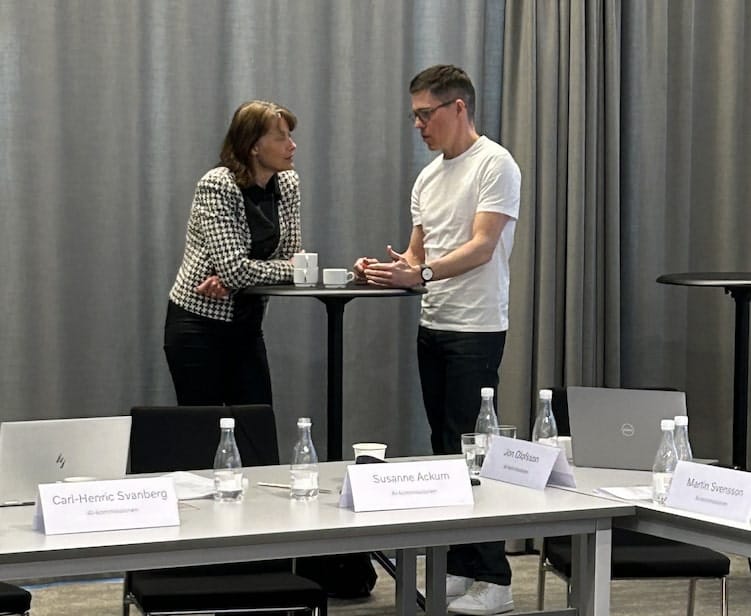
Smaller and more focused AI models can also create value, both directly and indirectly around the cluster that is formed. But I find it hard to believe that it would come close to the massive advantages we gain through increased use.
It could also be that if we become the leading country in the world when it comes to the use of generative AI, then all the new things created there will open opportunities for models. Say that Swedes create exciting new things within AI music. In that, a special model for AI music might emerge. The chances of it being built in Sweden are then good.
I wrote more about this after the previous meeting. Please, share your thoughts!
Insights from AstraZeneca
Peder Blomgren and Anna Sandström talked about AstraZeneca’s AI work, which was impressive. Not least in terms of the use of generative AI. Over 20,000 people within the company used ChatGPT or other generative AI.
Among other things, it was used to speed up work in clinical trials. What previously took several weeks, was now done in days. For some participants in a clinical trial, the medicine being tested could be their last chance. Thus, time plays a very important role!
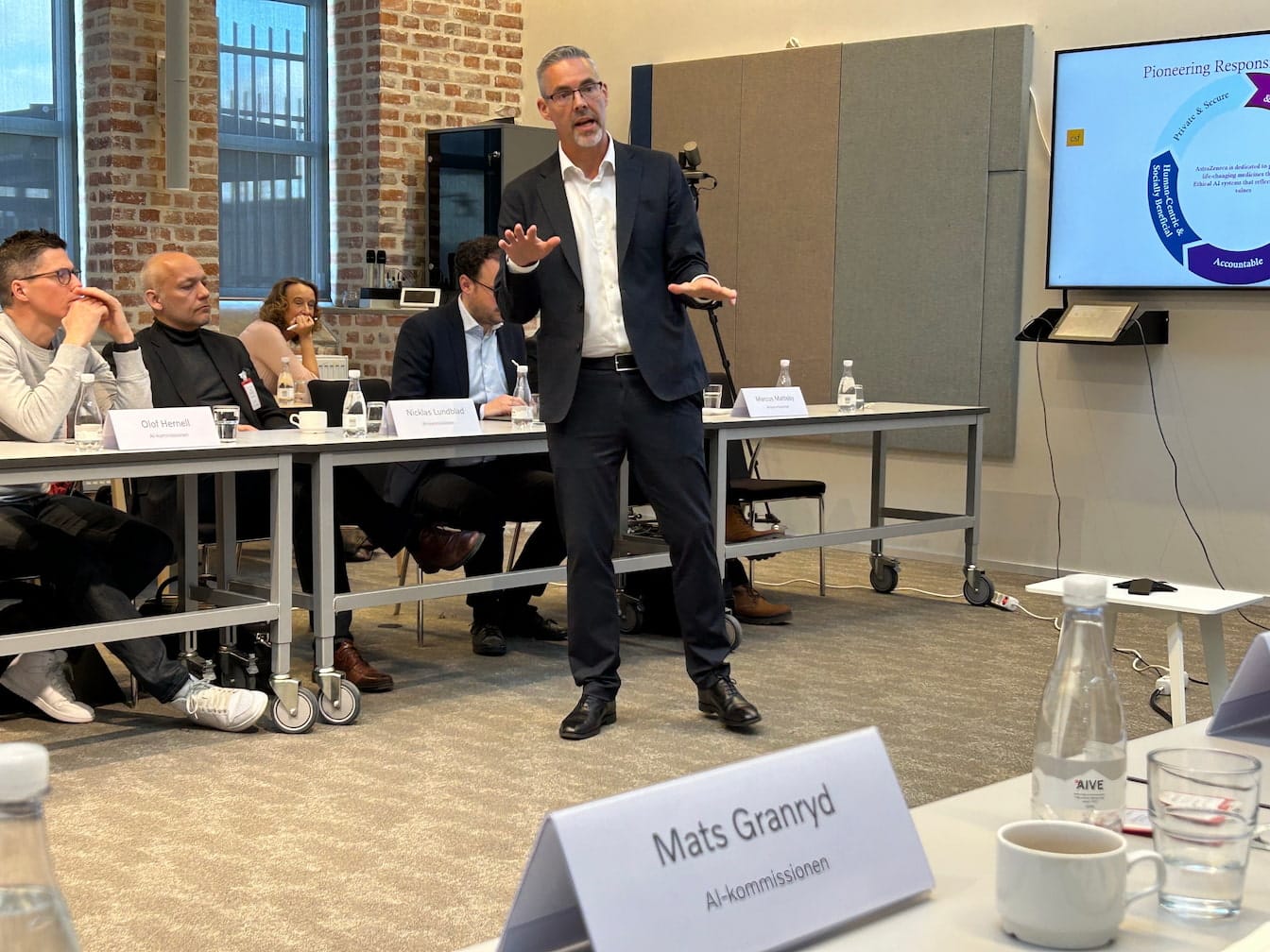
We tend to worry about new technology and the risks it entails. There’s nothing wrong with that, but we often forget the problems that old technology creates. The new is measured against perfection, but we are used to the old.
Allocation of responsibilities
After all the presentations, the commission's own meeting took place. Chairman Carl-Henric Svanberg and the head secretary, Susanne Ackum, summarized the recent months' work. The office, led by Svanberg, has had over 60 meetings with agencies, companies, politicians, researchers, unions, and lots of other stakeholders.
Overall, most are very positive and eager to get started. Not least the public sector, which sees AI as a big help in managing the mission ahead, without having to significantly raise taxes or cut down on quality.
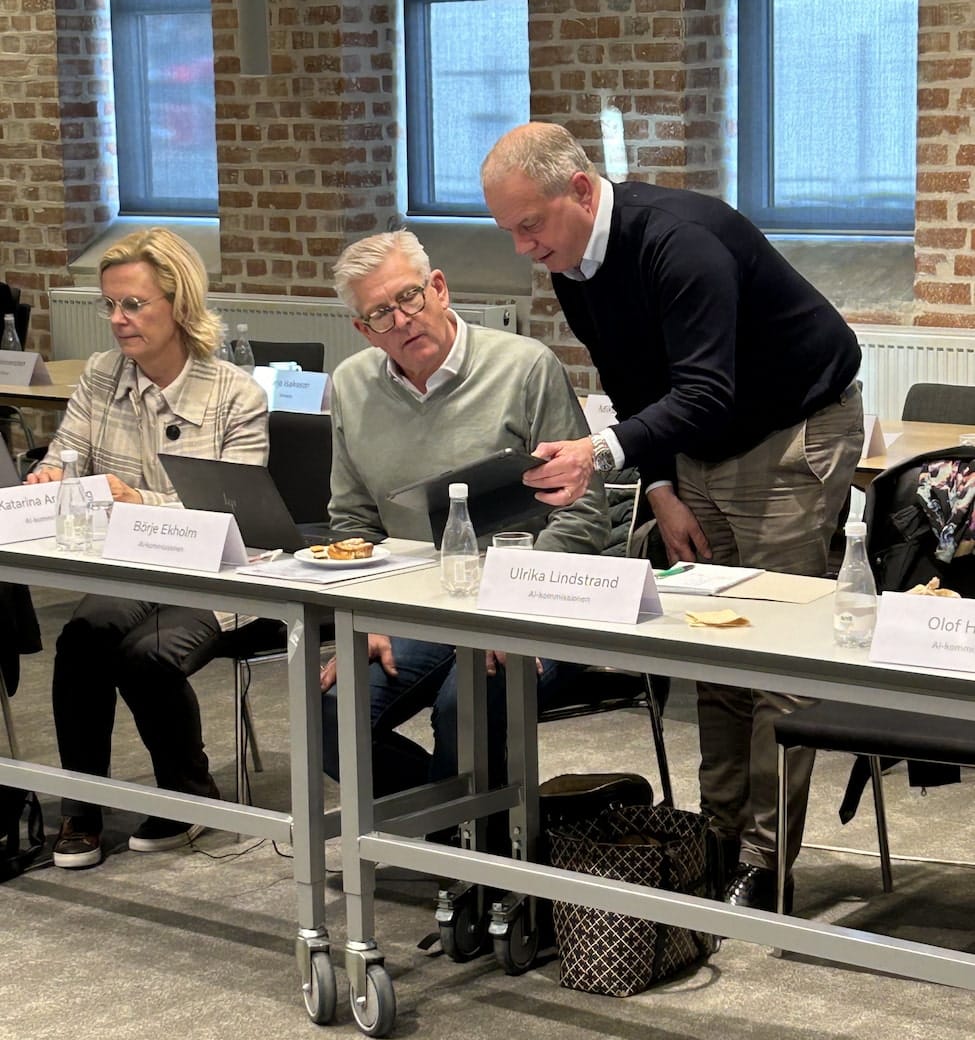
At the meeting, we divided the commission's members according to areas of responsibility in the final report, which we are to submit to the government. I personally appreciate this part very much. There’s always a risk in committees or working groups that the chairman, or the office, dictates much of the content. The members are mostly just for show. That is not at all the case here. Members are not only allowed but expected, to contribute to writing the content of the final product.
After a brilliant day at Volvo, we took the tram, and then the train, from there.

Mathias Sundin
The Angry Optimist
By becoming a premium supporter, you help in the creation and sharing of fact-based optimistic news all over the world.

